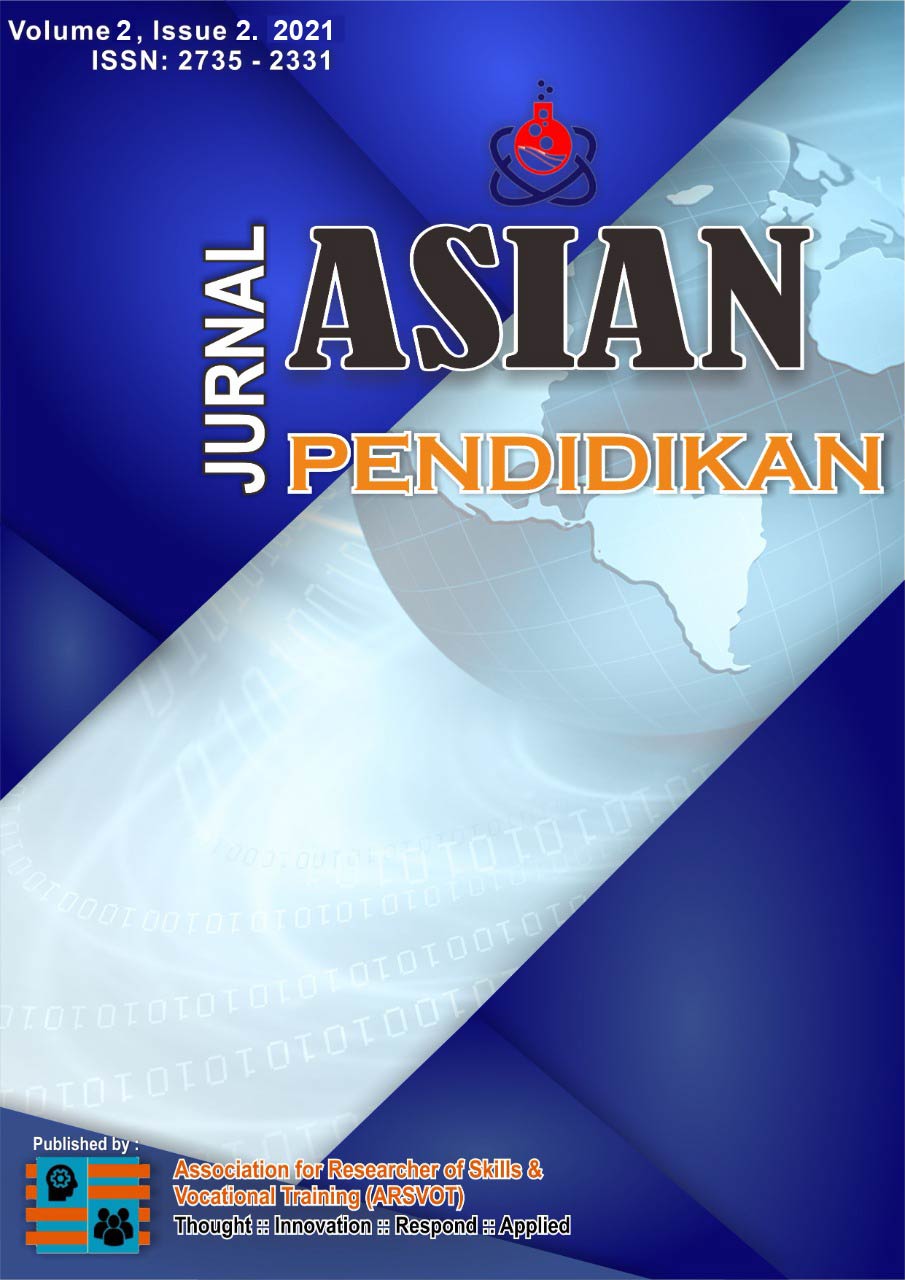Perkembangan Nilai Moral Melalui Model Projek Citizen Dalam Kalangan Penuntut PKn Universiti Muhammadiyah Purwokerto, Indonesia
DOI:
https://doi.org/10.53797/aspen.v1i2.13.2021Keywords:
Moral values, citizen project model, citizenship education, participatory action researchAbstract
Citizenship Education (PKn) is a compulsory course in the Higher Education curriculum in Indonesia. Citizenship Education aims to produce university students who have the skills of moral values and civilized behaviour as outlined in the Pancasila of the Republic of Indonesia. However, the problems of Citizenship Education in Indonesia, include the delivery of moral values in theory in the form of knowledge only without emphasis, on the aspect of value building so that the values learned become individual student habits. In this context, the Citizen Project Model is considered capable of being a teaching method that develops moral values in theory and practice. Thus, this study aims to explore the potential of the Citizen Project Model (CPM) as a tool to develop the moral values of university students. This study was implemented in a qualitative approach by using the design of Participatory Action Research. Participants engaged in charitable and social work in the local community, through the Citizen Project Model, in all three loops of Participatory Action Research. The findings of the study show that the Citizen Project Model, can develop four main values, namely, the values of rationality, justice, honesty and kindness among the participants. This study has implications for the teaching methods of Citizenship Education and the participation of students together with the community in an effort to develop moral values and moral behaviour.
Downloads
References
Abdul Rahman Md. Aroff, & Chang, L. H. (1994). Pendidikan Moral (dinamika guru). Petaling Jaya: Longman Malaysia.
Asri, B. (2013). Pembelajaran moral. Jakarta : Rineka Cipta.
Azizah, A. B., Huwaida, A.N., Asihaningtyas, F., & Fatharani, J. (2020). Konsep, nilai, moral dan norma dalam
pembelajaran PPKN SD. Nusantara:Jurnal Pendidikan dan Ilmu Sosial, 2(1),129-138. https://ejournal.stitpn.ac.id/index.php/nusantara
Azzet, A. M. (2014). Urgensi pendidikan karakter di Indonesia. Yogyakarta: Ar-Ruzz Media.
Boeije, H. (2010). Analysis in Qualitative Research. Sage Publications Ltd.
Budimansyah, D. (2002). Model pembelajaran dan penilaian berbasis portofolio. Bandung: PT. Genesindo.
Budimansyah, D. (2014). Perancangan pembelajaran berbasis karakter. Bandung : Widya Aksara Press.
Budimansyah, D. (2016). Teori sosial dan kewarganegaraan. Bandung. Widya Aksara Press.
Braun, V., & Clarke, V. (2006). Using thematic analysis in psychology. Qualitative Research in Psychology, 3, 77–101.
Chang, L. H. (2005, September). Educating teachers for Moral, Civic and Citizenship Education: Challenges ahead. Kertas
kerja yang dibentangkan dalam Asia-Pacific Moral, Civic and Citizenship Education Conference pada 21-22 September, 2005 di Hotel Concorde, Kuala Lumpur.
Chang, L. H. (2007, Jun). Moral reasoning of Malaysian adolescents. Kertas kerja yang Dibentangkan dalam International
Conference on Learning, Johannesburg, South Africa.
Crane, P., & Richardson, L. (2000). Reconnect action research kit. Canberra: Department of Family and Community
Services.
Creswell, J. W. (2012). Educational research: Planning, conducting, and evaluating quantitative and qualitative research
(4th ed.). Englewood Cliffs, NJ: Pearson.
Dahliyana, A., & Suabuana, C. (2019). Project Citizen: Penguatan Pendidikan kewarganegaraan dalam membina
nasionalisme. Sosietas Jurnal Pendidikan Soiologi, 9(2), 708-718.
http://ejournal.upi.edu/index.php/sosietas/
Gibson C. & Levine, L. (Eds.) (2003). The Civic mission of schools. Carnegie corporation and circle foundation. New
York: Carnegie Corporation
Haidt, J. (2001). The emotional dog and its rational tail: A social intuitionist approach to moral judgment. Psychological
Review, 108(4), 814-834.
doi: 10.1037/0033-295X.108.4.814.
Higgins, A., Power, F. C., & Kohlberg, L. (1984) The relationship of moral judgement to judgments of responsibility. Dalam W. M. Kurtines, & J Gerwitz (Eds.), Morality, Moral Development and Moral Behavior: Basic Issues in Theory and Research. New York: Wiley.
Jayadiputra, E. (2015). Model Project Citizen dalam meningkatkan keterampilan berpikir kritis siswa. Jurnal Ilmiah Cisoc
Kajian Rumpun Pendidikan Ilmu Sosial, 2(1), 11-20.
Karliani, E. (2014). Membangun civic engagement melalui Model Service Learning untuk memperkuat karakter warga
negara. Jurnal Ilmiah Pendidikan Pancasila Dan Kewarganegaraan, 27(2), 71-78.
Nucci, L. (2001). Education in the Moral Domain. New York: Cambridge University Press.
Power, F. C. & Power. A. R, (2006). Moral education and civic engagement: An appropriation of Durkheim. Dalam Wouter van Haaften (Ed.), Moral Sensibilities III, Nijmegen: Uitgeverij Concorde.
Samani, M. & Hariyanto. (2014). Konsep dan model pendidikan karakter. Bandung: Rosda Karya.
Sherrod, L., Flanagan, C. & Youngish J. (2002). Dimensions of citizenship and opportunities for youth development: The what, why, when, where, and who of citizenship development. Applied Developmental Science, 6, 264-272.
Ulfah, N.S., & Solihin, S. I. (2017). Model Project Citizen dalam pembelajaran PKn untuk meningkatkan keterampilan
berpikir kritis siswa. Antologi UPI, 5(1), 134-145.
Winataputra, U. S. (2016). Posisi akademik pendidikan kewarganegaraan (PKn) dan muatan/mata pelajaran pendidikan pancasila dan kewarganegaraan (PPKn) dalam konteks sistem pendidikan nasional. Jurnal Moral Kemasyarakatan, 1(1), 15-36.
Downloads
Published
How to Cite
Issue
Section
License
Copyright (c) 2021 Eko Priyanto, Nadarajan Thambu

This work is licensed under a Creative Commons Attribution-NonCommercial-ShareAlike 4.0 International License.




